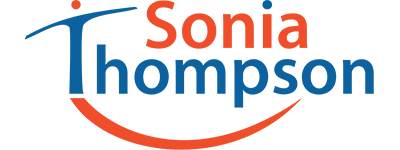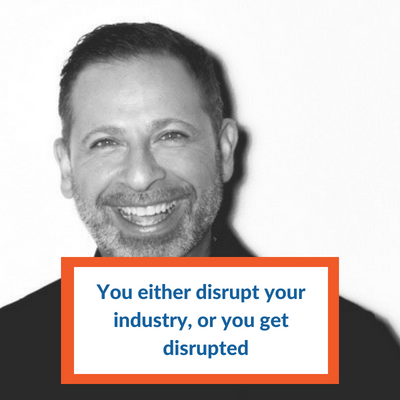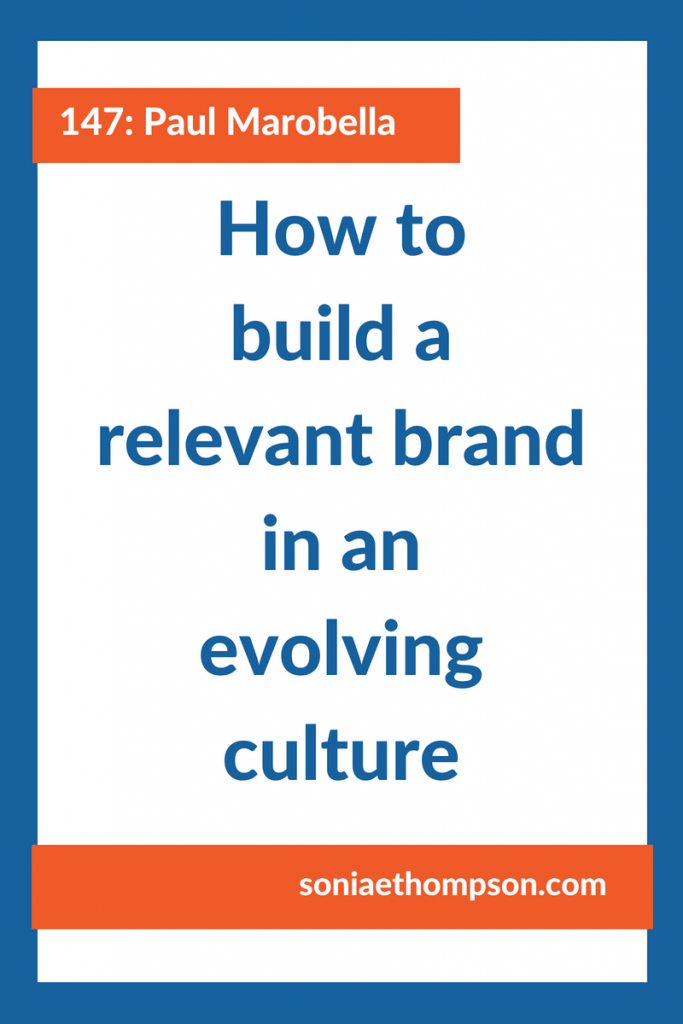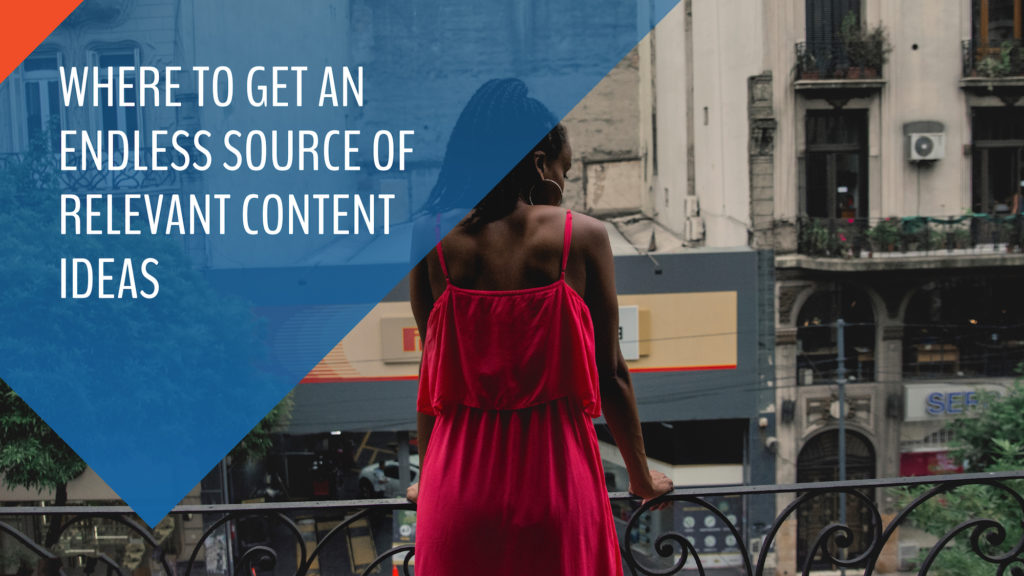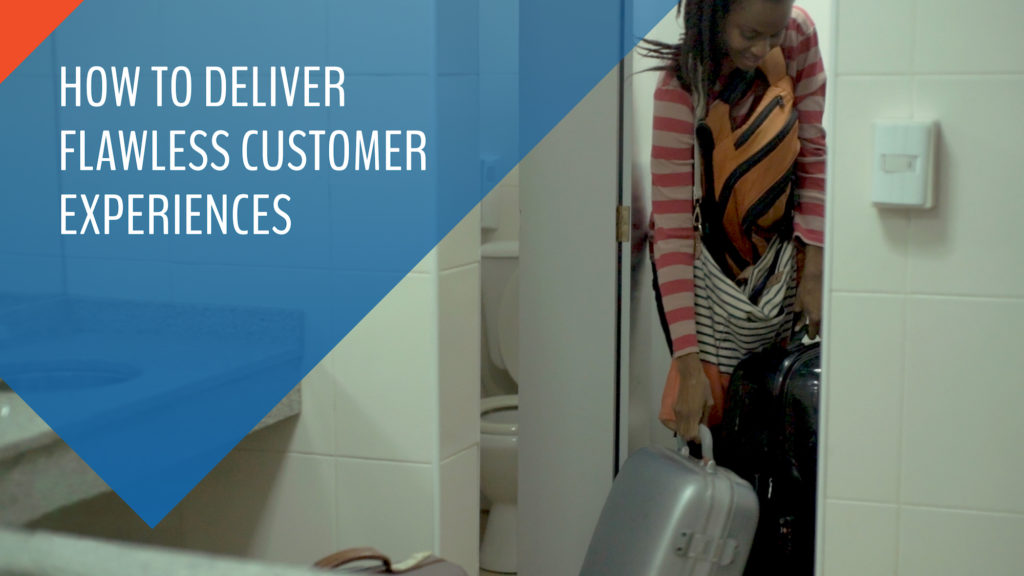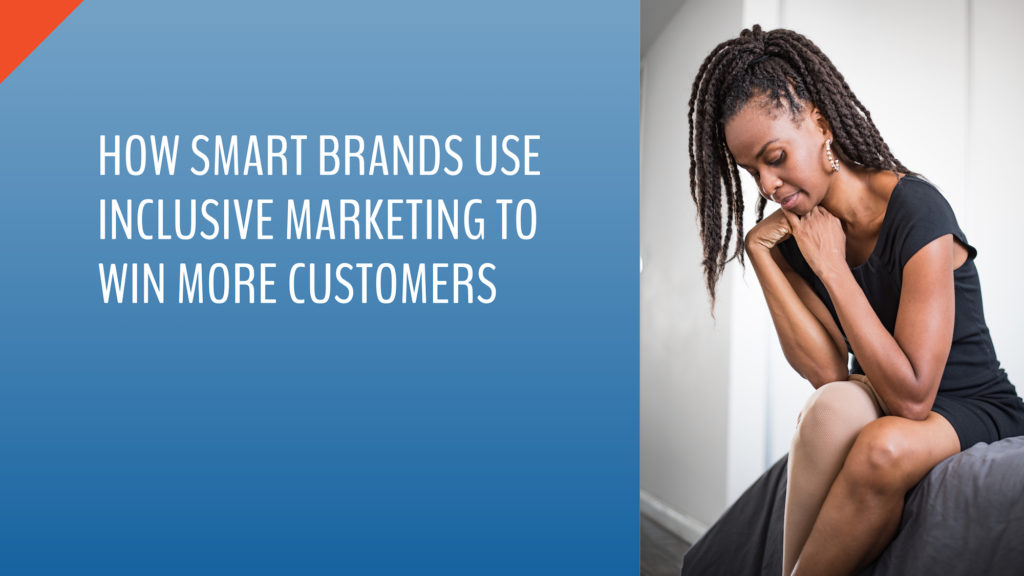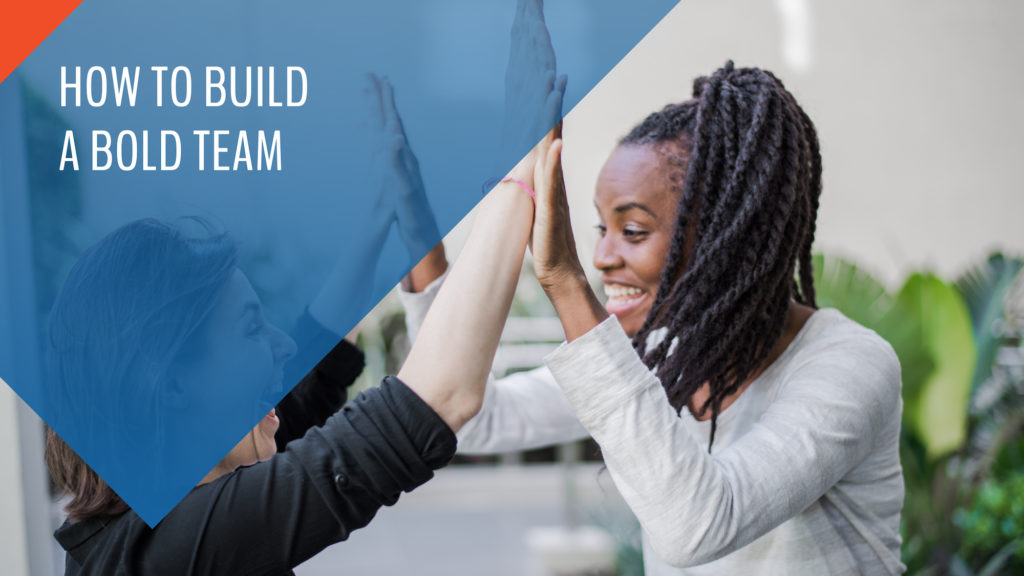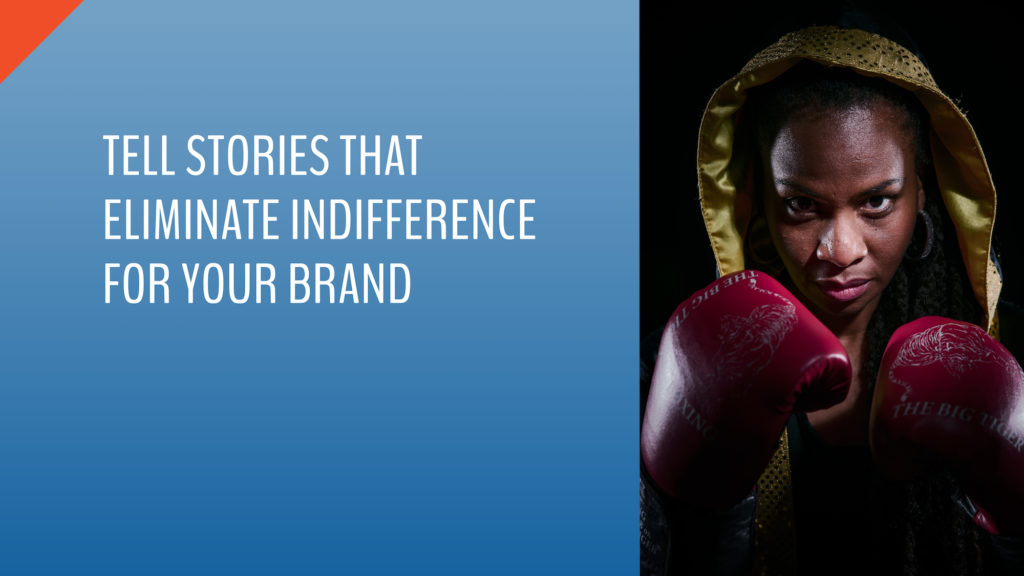Today we are talking about culture, and specifically how to build a brand that is relevant within today’s ever evolving culture.
To dive into this topic, I chatted with Paul Marobella, CEO and Chairman of Havas North America, one of the world’s largest digital, creative, media, and entertainment agencies.
We can learn a ton from Paul, I know I sure did, in particular how to be the disruptor in your industry, rather than the one that is being disrupted.
Key points:
- Smart and fun ways to invest in your team’s professional development
- What the cultural zeitgeist is, and why you need to lean into it
- The 1 thing brands must do to effectively tap into what is relevant in the culture
- The biggest bad habit many brands engage in that prevents them from staying relevant
- The important reason why you need to rethink how you source top talent
- Why content is the cornerstone of your ability to consistently deliver remarkable experiences
- Why every industry is being disrupted and what to do about it
Listen to the 29-minute episode here:
Watch the episode here:
Read a transcript of the episode here:
How to build a brand that connects with your customers on a deeper level
Sonia Thompson: Hello Paul, thank you so much for joining me today. How are you?
Paul Marobella: Hi, I’m doing great, thank you for having me.
Sonia: Oh it’s my pleasure. Alright, well let’s go ahead and dive right in. This is a super cool topic that I’m excited to dig into more. First, tell me about your company, Havas North America, and how did you come to be at the helm of it?
Paul: Well, thank you. It’s a great company. Havas North America is one of the largest advertising and communication companies and part of the larger Havas Group, globally, based in Paris. And we’re part of Vivendi, and Vivendi is a French company that owns Universal Music Group, which as you might know, owns 50% of the world’s music, and Studiocanal which is a movie studio, and Gameloft which is one of the largest mobile gaming companies in the world.
In our organization, you have story telling and creativity, covered across the whole spectrum, so it isn’t just about advertising, it’s about how can culture and creativity be a part of helping brands connect with consumers in more emotional, personal ways. And we think that make us different, different from the other advertising holding companies that are out there.
North America is an important region for Havas, and Jason Peterson and I are co-chairs of the North American region for our company, and we have some great agencies, and we have some amazing people all around the country, and the countries here in Canada and the U.S., and couldn’t be happier to be here.
Sonia: Sweet. Alright, well what would you say is the specific problem that you solve for the people you serve?
Paul: Sure. I think there’s two people we serve. The first one is the people that work here, and the others are the people that we do business with every day, our clients. And what gets us out of bed in the morning, is to really be … The way we say it is the most meaningful partner to the modern CMO and brands, and meaningful to us takes shape in a lot of ways. But when you look at the challenges that brands and marketers have today, it’s a very different challenge than maybe we had 10, 15, 20 years ago, but a lot of things stay consistent.
So meaningfulness to us, from a brand perspective is how do we leverage creativity in new ways. How do we tap into culture in really truly authentic and meaningful ways which many brands get right and many brands don’t get right, and their brands are impacted because of that.
Of course, we need to drive commerce, and building community around brands are really important as well, like social qualities, and engagement communities, some brands do that really well. And the last one would be the really powerful experiences for us. Really powerful customer experiences. Those are the five things that we focus on. Those are the five things that we do for our customers.
And for our employees, we want to have a really amazing place to work. Advertising is not an easy industry to work in, that’s no secret. And I have a saying, I like to say that, “You have to be a masochist and a speed-freak to work on the agency side of the business for any period of time.” And so for us, how do you create an environment that people want to come to every day, that they want to be a part of, that helps them truly understand what’s happening in culture, by surrounding them in culture, and then so they can apply that to our client work every day.
Sonia: Have you found that as you invest more in your team, that they are able to in-turn able to do better work for you? Is it really just, you can’t focus on just delivering for your clients, without making sure that you invest that same type of energy in your team?
Paul: Yeah, that’s a great point. We have a variety of ways that we do that, and some of them take place on a daily and weekly basis, and some of them take place on a quarterly and annual basis. We have a couple.
One of the things that we do in all of our offices is have cultural events that allow and give our people the chance to experience parts of culture that may have nothing to do with advertising. Music, fashion, tattoo art, graffiti art, whatever it might be, that shows what’s happening in popular culture, what’s mattering to different segments of customers. And that helps really create, really interesting ideas for our clients.
And also, we have larger things, like a lot of our people … We nominate people to go on what we call learning expeditions globally. So we’re a global company, we have offices in 45 different countries, especially when you include Vivendi as a part of that. We have some people who go on what we call learning expeditions that visit different offices around the world, visit Universal Music Group, learn about how record labels work, how musicians get signed, learn about how scripts are written for TV shows or for movies, and that’s a different access into creativity that they can bring everyday to building brands.
How to use culture as a way to deliver remarkable customer experiences
Sonia: You’ve mentioned culture a few times, and I wanna just … I don’t wanna take for granted that everyone knows what we mean whenever we’re saying culture, and so I think some of the terminology that a lot of people use now is the cultural zeitgeist. So what exactly is the cultural zeitgeist and how does it help companies deliver remarkable experiences to their customers?
Paul: I’ll use some examples to explain cultural zeitgeist because I think that on the most macro level, the cultural zeitgeist that we’re feeling now is a tension in our society. And we don’t have to debate why that tension exists, but if you just looked at what’s happening today, whether that’s Roseanne or whether that’s how Kanye’s talking to his customer base, or whether you look at what’s happening in the world, there’s an inherent tension that’s permeating music. It’s permeating fashion, and it’s permeating how brands are connecting with their buyers in more meaningful ways. And I think that when you look at that sort of overlay, you can think about how brands are engaging that.
Often times, people, I think, misinterpret culture as fashion. Like Yeezys for example, its like we need an idea that includes Yeezys, or we need an idea that includes Kendrick [Lamar] or whatever it might be. But actually, there’s a part of culture that is technology movements, for example.
So when you look at Blockchain, I would say probably the majority of people don’t really how Blockchain is or how it works. But we had just created an ad, the first ad in the Blockchain for TD Ameritrade which has TD Ameritrade planting a flag in the Blockchain. The ad will be there forever, and it’s a way for a brand like TD Ameritrade, which I think that you would look at as like a sneaker brand or a beverage brand, but they’re a financial services brand that wanted to capitalize on culture, but do it in a way that was relevant to their brand.
Sonia: So can any brand tap into is, because I know, like you just gave the great example of TD Ameritrade which is a financial services company, because I think a lot of companies will feel like, “uh that’s not really us,” like “this isn’t in our lane,” or “we’re out of our element.” Is this something that any brand can do?
Paul: I think that’s why I started with the definition of what the cultural zeitgeist is, and I … the truly thing that matters is what’s relevant, and what’s in the personality of that brand. I think when you look at a brand like Sprite, that we work with, it’s easy for them to tap into Lil Yachty, and have Lil Yachty be in their videos, and be in their commercials. Its easy for them, because it works for their brand, but Lil Yachty probably wouldn’t work for TD Ameritrade. Although there might be ways that we could work that out if you were trying to work with connect with a different customer base.
It has to be authentic and meaningful and matter to that brand. And what’s interesting is that we often find that the people that are making decisions, whether that’s the agencies or that’s the client side, aren’t typically tapped into what’s happening with their customer base. And it’s our job as their creative and cultural partner to help demonstrate to them how tapping into certain veins of culture will drive and grow their business.
How to build a team that is in tune with what is happening in culture
Sonia: Do you see that as … I’ve heard this a couple of times, and that’s obviously your role as the agency, do you feel like more companies need to start developing more of a sense and a pulse of what’s going on so they don’t have to rely all the time on their third party. It probably makes your job easier as well if they are sort of tuned in as well.
Paul: Yeah, I mean I think it is the value that we bring as a creative partner to brands across all categories. For us, Jason and I realized awhile ago, that in order for us to truly be authentic about what’s happening in culture that for the both of us, we needed to bring talent into our company that are from those veins of culture.
They’re not traditional advertising people, and this is a body language shift that I think you have a lot of marketers and brands and agencies that talk about culture … Get on stage at the big events and talk about culture, will do a PowerPoint presentation, show some videos, but really at the end of the day, they’re not really tapped into what’s happening … in culture.
We recognized that, and we kinda leaned into that and said, “We’re getting a little gray and we’re not really that tapped into what’s happening.” So we built something that’s called The Annex, and The Annex is … the original positioning was ‘For Millennials by Millennials,’ and it was let’s bring in, let’s hire people from the different parts of culture that have no experience in advertising.
They are from fashion world, we’ve hired people from Virgil Abloh’s RSVP Gallery here in Chicago. We’ve hired people from music. We’ve hired people from other aspects of the world that aren’t traditional advertising creatives. And we’ve paired them with advertising creatives. So for us, that’s how we’ve stayed relevant, and how we brought that to brands. I think that’s the role of … I think it’s harder for brands to do that, because you can’t buy your way into culture.
Sonia: No.
Paul: And if you think of, they’ll remain nameless, but if you look at some brands that have tried to buy their way into culture recently, it goes horribly wrong, because often it’s very tone-deaf. And to do it the right way, can be really scary for brands because it’s not natural or native to them, whatever’s happening in culture, for the most part, the people making the decisions. That’s the tension, and that’s the tension where agencies can help resolve that tension because it’s easier for us to do that. Often in Fortune 100 companies it can be more difficult.
The role of events in delivering culturally relevant customer experiences
Sonia: Very good. What is the role of events and delivering these types of culturally relevant experiences, because I hear a lot of great examples of brands that are doing lots of cool things that are tapping into what’s happening right now. But are events the core of how it happens, or is it really like a cross-section?
Paul: I think it’s really hard to bring a brand a life in a 3-D way in advertising, and experiential and events are … We see it rising. We see it’s more important to a brand’s business. We see that the brands that are doing it the right way, aren’t just creating these events for a few hundred people. They’re using that content, and they’re using that experience to broadcast to a wider group. So we talk about return on that investment. How do we make that experience go beyond the few hundred people that engaged at that moment.
So we created something for Peet’s Coffee at Coachella called the ‘Ice Sauna’, which was a launch of their Iced Cold Brew, but it was at Coachella, but it wasn’t just for the thousand people, however many people engaged the event, they used that on a more mobile way to be a part of a wider point of view for the brand. And we see experiences growing. We’re investing in experiential. We’re investing in experiences, and we do see it as a growing part of the business.
Sonia: For sure, very good. Now what are your thoughts on the difference between experiential events that some might say, “These are just PR stunts, and we don’t wanna be in the business of doing PR stunts,” versus brands that want to deliver remarkable experiences and meaningful defining moments for their customers. Is there a distinction between the two?
Paul: I can’t think of any examples off the top of my head that would considered a PR stunt, although I think if done right, and within the context of the positioning of the brand can provide a new perspective on the brand, and if it’s true to the consumer. Our group in New York, the 88’s had done an event for Adidas in New York City where they sort of leveraged the guys that sell the counterfeit bags out of the black bags on Canal Street and had launched a sneaker that way for Adidas. And it was an event that happened all around the city, and it was a really interesting event, but it tapped into a truth in culture, which was counterfeit sneaker culture. It tapped you into truth in New York City, but when you look at the content that was created as a part of this PR stunt, it really tapped into a truth that existed in the world that would matter for that particular brand.
Sonia: How do you … because I’ve heard you say this a lot of times, it’s not just about creating the event or the experiential moment, its bringing it in content. So is content a critical component to being able to do this and make it more of a surround sound type of approach, where you’re able to reach as many people as possible?
Paul: I think content is at the heart of how our industry is changing, and creativity itself is coming to life in ways that isn’t just around the 30 second spot or isn’t just around having four months to create a TV commercial, and everybody goes to L.A., and has craft services, and we shoot a TV spot with a celebrity. And what’s shifting is that Jason, my partner, talks about this all the time is that ‘shot on an iPhone’, fundamentally changed our industry credibly. And the brands and the agencies that are tapping into the creator culture, are the ones that are succeeding.
So as we look at our creative mission is to move creatives to creators, that’s Jason’s creative mission. So in order to do that, you have to hire people that know how to create a TV spot with this, and that’s a different set of skills. And so how do you have an experience or an event, and then create content that’s relevant and meaningful and that can be used across platforms to exponentially drive awareness of what’s happening with the brand.
Sonia: So I guess with the addition of content, it sort of transforms what brands are producing away from moment-in-time events. It’s like okay we produce one event a quarter, to where it’s something that allows them to be engaged and connected all the time or all year.
Paul: Right, there’s a team that we created in Atlanta for Coke, and across 16 Coca-Cola brands that is a content creation team, and this team taps into three things. They tap into what’s planned on happening, so like the Super Bowl, or the Oscars, or the Grammys, and we’re gonna create content for the brand around those.
Whatever’s happening in real time. So we’re at the Super Bowl, something happens in the game, how can we create content in real-time that drives the brand’s purpose, drives the brand’s mission in real-time. And that type of content creation isn’t just about creating a TV commercial, it’s about providing your buyer with either entertainment, or whether utility, regarding your particular product or service. But to do it you have to change your mindset about what content actually is. It’s more disposable. It’s not, you can test and learn…
Some of the best brands today are developing an idea, and they’re testing and learning that idea with a $500 piece of content. And that content may catch fire, or it may not. And if it catches fire they’ll uplift it, and they’ll start to invest in it, start to invest in the production. And again, everybody’s creating content now. Everybody’s a photographer. Everybody’s a videographer. Everybody has a filter. Everybody thinks they’re an expert on portraits, and that’s cool, but it also … Brands have to tap into that.
How to get a return on your investment with culturally relevant events and content
Sonia: Now I love how you’re talking about the way the world of advertising and promoting your products is changing. The marketing, there’s the core principles of marketing, but the way in which we execute and we show up, is just, it’s evolving rapidly. I think that’s kind of difficult for a lot of brands when they’re thinking about trying to deliver the remarkable, they still get very stuck up, ‘but we’ve gotta talk about our product. We’ve gotta focus on our features and our benefits. We’ve gotta sell, sell, sell.’ Now what is the role of having these types of product, more salesy messaging, as you’re trying to have these types of communications and experiences and tap into the culture at the same time?
Paul: Yeah, I think that’s the tension. I think that brands, especially publicly traded brands, are under pressure to deliver sales overnight. The brand over time, which is a tension not only for us but for them. And when you look at a brand like Carl’s Jr. That we recently started working with … They balance it nicely. They wanna tap into what’s happening in culture, but they wanna do it in a way that promotes the product in a really interesting way, but it promotes the price point in a really interesting way and drives traffic.
And one brand that I’ll focus on in the same category which we don’t work on, but I have a lot of respect for is KFC. And you know, if you look at the KFC spots over the last few years, the last couple years maybe, they have done a really interesting job at creating what I’d call some of the most promotional advertising that’s in the market, but it entertains you. Its relevant. It taps into culture by changing out who the colonel is every week or two. And so they’ve found a way to be creatively relevant, be true to the brand, and be promotional at the same time.
Sonia: Very good. Now along the same lines, as you’re trying to find that tension, you hear a lot of marketers, a lot of companies focusing purely on ROI numbers. So how do you measure the ROI of these types of events, or should that be part of the conversation as you’re going through it?
Paul: I’ll start by saying that advertising isn’t the fix for everything. Which often times companies and brands think that advertising, and marketing, and events, will solve all of their problems. There is a little thing like having a good product to sell, or having a good retail environment for people to be a part of, or having a great website that actually works, or a good mobile app that actually works.
So ROI, for me, is a few things. It isn’t just for every dollar I spend I want three back. From where I sit, it’s did we change perception? Did we improve purchase intent? Which as a brand marketer, often can be the proxy for all we can do. We don’t necessarily control the quality of what’s in the can, or we don’t necessarily control the quality of what happens in the website always, we don’t control the retail environment, always. So if we can change a consumer’s perception of the brand, and we can measure that through purchase intent or brand perception, or the delta between here’s how I felt about the brand after I saw the advertisement or engaged the event or experience, heres how I felt after that. That’s to us is the ROI, and it’s very measurable.
Sonia: No, I hear you. I think that’s a good point, because I think sometimes they get so focused on we put this commercial up, what happened to the numbers? Or we made this Instagram spot, did we get a bunch of new likes as a result? That’s not always it.
Paul: That’s not always it. You gotta worry about the product and the experience too, which is part of that. And every category … Every single category is being disrupted. Everyone, and every client that we have in some way is under attack. Whether that’s through a start-up technology company, or whether … Every retailer that we work with, whether it’s Amazon, or a direct consumer brand, like from an apparel perspective whether that’s Bambas or Rhone, or like these direct stands, or these direct to consumer brands … They’re all being disrupted.
So what these smaller brands have the ability to do is be distinctive, memorable, more agile, more flexible. They don’t have a huge board they need to get approval from. They don’t have Wall Street they need to get approval from. They can move quick and they can actually build technology on the fly. They act more like a Silicon Valley company than an actual CPG brand.
How to be the brand that disrupts your industry (rather than the one getting disrupted)
Sonia: Do you see taking this type of approach as a combination of both a short term and a long term strategy? Because as I hear you talking about it, it seems like this is part of playing the long game, and the more you engage and you stay relevant with what’s happening right now, the better you do at earning the attention that keeps people coming back over time.
Paul: I think that it’s … if it’s trending it’s too late, which is something we talk a lot about. Brands will often try to jump on a trend train, and you can tell the ones that are a little late. You can tell the ones that are actually setting the trends, and I think for us and for our clients, driving innovation is one of the hardest things. Driving innovation and being responsible to the balance sheet on a day-to-day basis is a really hard thing to do, and you have to have a leadership team, and investors, and a board of whomever that might be actually believe in investing in a percentage of the revenue, or whatever it might be in innovation.
What’s interesting is when you look at … As someone said the other day, “Negative cashflow is the new sexy.” When you look at the big, sexy companies like Netflix … they’re cashflow negative. It’s crazy. But they’re cashflow negative because they’re playing the long game. They’re investing in their technology. They’re investing in their platform, like Netflix, they’re investing in their content. And they aren’t beholden to having a 25% return on a quarterly basis. They will at some point. They’ll get called at some point, but by that time, it’ll be too late for the category, because they’ll have owned the category.
Sonia: I think that those are great examples. And it just goes to show you … Putting that ROI conversation that we were just having back into context of when is the right time to measure, it might not be so cut and dry as you said, “Oh, if I invest a dollar, I’ll get three back.”
Paul: I think it’s okay, to have your cash cow, whatever it is that is your core business fund your innovation. I think that the smartest companies do that. I think they know what their core is. They’ll continue to be excellent, execute flawlessly on that core. But they have an eye to the future, so they’re either investing in incubators or instead of ignoring the competitive set, or the little start-ups in their industry, they buy them. Or they incubate them. Or they find a way to have a stake in them, so that when the time comes, they can make them part of their business to fund their future.
Sonia: Well this has been super fun. Where can people find you if they wanna learn more about you, they wanna learn more about the work that you guys are doing and some of the cool things that you’ve done with some of the brands that you’ve been working with.
Paul: Yeah, thank you. On Havas.com you can find what we’re doing overall, and then all my social channels are @marobella.
Sonia: Alright, and I’ll put all that in the show notes so people can find it easily. Alright, well before we go, any parting words of wisdom for business leaders who want to be culture creators and sort of lead the way versus purely following the trends as they’re working to create remarkable experiences for their customers?
Paul: One of the things that I’ve heard recently that resonate with me is, “Disruption is when it’s being done to you. Innovation is when you’re doing it to a category.” And so I think that’s what we’re trying to live by, that’s what we help try to have our clients live by. You know I wake up every day and try to learn something new, and being in the business for almost 25 years, it’s how do I learn something new? How do I stay tapped in? How do I find a way to bring whatever it is that I learn every day to our people and to our customers, so that would be my advice.
Sonia: I love it. This has been a lot of fun. Thank you again. Super insightful.
Paul: Oh it’s my pleasure, thank you.
Show notes:
- Havas North America
- Paul Marobella on social media
Free Mini-Course: The Customer Magnet Playbook
Free Mini-Course: The Customer Magnet Playbook
7 Essential elements your business needs to consistently win more customers
- Framework based upon in the trenches experiences from 150+ business and thought leaders
- Science-based explanations to support why the elements of the blueprint work
- Action items to help you get some quick wins
